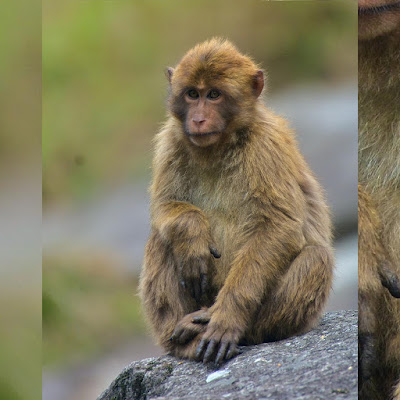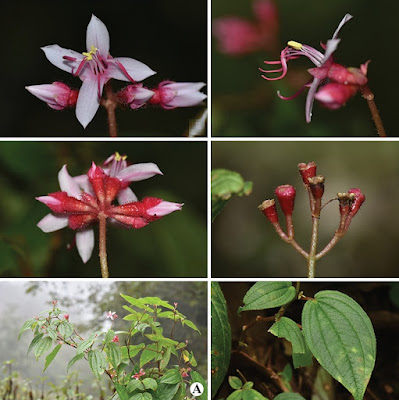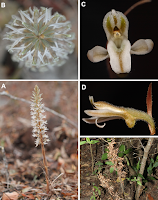 |
Ancistrus luzia
Neuhaus, Britto, Birindelli & Sousa, 2022
|
Abstract
A new Ancistrus species is described from Tapajós and Xingu river basins. It is distinguished from its congeners by the singular body color pattern, consisting of dark vermiculated stripes almost all over the body, and also by combination of features as a narrow head, large internostril distance, and absence of rows of enlarged odontodes on the lateral plates. In addition, the new species is distinguished from congeners that inhabit the rio Tapajós basin by the presence of a fully-developed adipose fin (vs. adipose fin absent in Ancistrus parecis and A. tombador, and vestigial adipose fin or absent in A. krenakarore). It differs from A. ranunculus, also from the rio Xingu, by the color pattern, smaller body size, smaller gill opening, and narrower cleithral width. The new taxon adds a new record to the list of species shared among the Xingu and Tapajós basins.
Keywords: Amazon; Brazilian Shield; Bristlenose pleco; Hypostominae; Taxonomy
 |
Lateral view of Ancistrus luzia, MNRJ 35505, 71.6 mm SL, rio Curuá, Xingu basin.
A. Preserved specimen. B. Specimen in life. |
Ancistrus luzia, new species
Ancistrus L 159. ―Stawikowski, 1994:145 [DATZ magazine, new imports from Brazil, figs. 6 and 7].
Ancistrus sp. “lineolatus”. ―Ohara et al., 2017:259 [identification guidebook from Teles Pires].
Diagnosis. Ancistrus luzia is distinguished from its congeners, except A. claro Knaack, 1999 and A. centrolepis Regan, 1913, by the singular body color pattern, consisted of dark-vermiculated stripes on head, dorsal and lateral plates of trunk (vs. body uniformly colored or with light or dark spots or blotches over head or dorsal and lateral plates of trunk). Ancistrus luzia is distinguished from A. claro by its narrower head (head width 30.8–35.1% vs. 35.2–38.2% HL) and greater internostril distance (18.7–23.7% vs. 14.9–17.0% HL), and from A. centrolepis by the absence of rows of greatly enlarged odontodes on the lateral plates (vs. presence of one to three rows of enlarged odontodes on the lateral plates). Juveniles of A. leucostictus (Günther, 1864) might show lines similar to A. luzia, but color changes to light, large spots as specimens grow. In addition, the new species is distinguished from its congeners that inhabit the Tapajós basin by the presence of adipose fin fully developed (vs. adipose fin absent in A. parecis Fisch-Muller, Cardoso, da Silva & Bertaco, 2005, A. tombador Fisch-Muller, Cardoso, da Silva & Bertaco, 2005, and vestigial adipose fin or absent in A. krenakarore de Oliveira, Rapp Py-Daniel & Zuanon, 2016). Ancistrus luzia differs from A. ranunculus Muller, Rapp Py-Daniel & Zuanon, 1994, the only described species from the rio Xingu, by the smaller body size in adults, smaller gill opening (HL/interbranchial distance equals to 1.7 to 2.0 vs. 2.3 to 3.9) and narrower cleithral width (SL/cleithral width equals to 2.8–3.2 vs. 2.1–2.9).
 |
Color pattern of juvenile specimens of Ancistrus luzia.
A, B. MZUSP 99877, 33.2 mm SL, from rio Teles Pires basin.
C, D. MNRJ 35504, 37.5 mm SL, from the rio Curuá, rio Xingu basin. |
Etymology. Named after “Luzia” (Lapa Vermelha IV Hominid 1), a female Homo sapiens skeleton and one of the oldest human remains found in the Americas (11,000–11,500 years before present), in 1974 and 1975 during excavations coordinated by the French archaeologist Annette Lamin-Emperaire (1917–1977) from the site of Lapa Vermelha IV, Lagoa Santa region, municipality of Pedro Leopoldo, state of Minas Gerais, Brazil (Neves et al., 1999). The skeleton is deposited at Museu Nacional Biological Anthropology collection (catalogue number 01959), Universidade Federal do Rio de Janeiro, and was recovered again after the fire that hit the institution on September 2, 2018 by Museu Nacional Rescue team, becoming a symbol of institutional hope and resilience. A noun in apposition.
Emanuel B. Neuhaus, Marcelo R. Britto, José Luís O. Birindelli and Leandro M. Sousa. 2022. A New Species of
Ancistrus (Siluriformes: Loricariidae) from Tapajós and Xingu Basins, Brazil.
Neotrop. ichthyol. 20(1) • DOI:
10.1590/1982-0224-2021-0129
Resumo: Uma nova espécie de Ancistrus é descrita das bacias dos rios Tapajós e Xingu. Distingue-se de suas congêneres pelo padrão de colorido único, que consiste em listras vermiculadas escuras em quase todo o corpo, e também pela combinação de características como cabeça estreita, maior distância entre as narinas e ausência de séries de grandes odontódeos nas placas laterais. Adicionalmente, a nova espécie pode ser diferenciada de suas congêneres da bacia do rio Tapajós pela presença de uma nadadeira adiposa totalmente desenvolvida (vs. nadadeira adiposa ausente em Ancistrus parecis e A. tombador, nadadeira adiposa vestigial ou ausente em A. krenakarore). Ela difere de A. ranunculus, a única outra espécie do rio Xingu, pelo padrão de colorido, menor tamanho corporal, menor abertura branquial e menor largura entre os cleitros. O novo táxon adiciona um novo registro à lista de espécies compartilhadas entre as bacias do Xingu e Tapajós.
Palavras-chave: Amazônia; Cascudo; Escudo Brasileiro; Hypostominae; Taxonomia















































